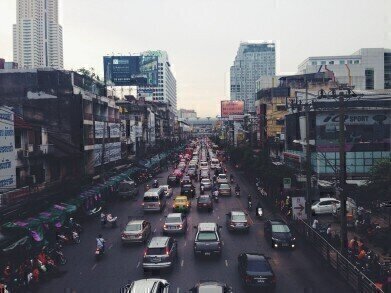Fuel for Thought
India to Monitor Air Pollution in 10 Cities
May 27 2015
Delhi is notorious for being the most polluted city on the planet with the World Health Organisation warning that its residents are at serious risk of respiratory diseases. In fact, the air that its citizens breathe in is four times more toxic than the designated safety limits.
As a nation, the Global Burden of Disease group identified outdoor air pollution as the fifth largest killer in India with an estimated 30 million people suffering from asthma. Not to mention the fact that the World Health Organisation has revealed that 13 of the world’s 20 most polluted cities are located in India. Yet despite its international reputation as one of the world’s biggest air polluters, Indian Prime Minister Narendra Modi has just unveiled a national air-quality index that will actively monitor air quality conditions across 10 major cities in the country.
A new era of clean air
The new project comes in the wake of increasing concerns that India is not pulling its weight when it comes to combating air pollution. One of the major triggers was the fact that the Indian capital recently overtook Beijing as the world’s most polluted city.
Using cutting edge technology the new air pollution index will track the presence of eight major toxins. It will then use a colour coded system to map out the health implications, with green indicating clean and red representing dirty. For people residing in crowded cities such as New Delhi, Bangalore and Chennai the index will make it far easier to assess atmospheric quality and the safety of surrounding air. Modi maintains that the index is part of the Nation’s amped up efforts to change its global stigma as a country that doesn’t value the importance of the environment, or the impeding issue of climate change. Now, India is making every effort to rekindle it traditions of environmental respect and encourage its citizens to become more aware of the need to minimise waste and conserve resources.
Polluting the nation’s health
So where is all the pollution coming from? The diesel vehicles that clog up the streets of Indian cities are identified as a key culprit, while dust and smoke from construction and industrial activity is also a major contributor.
For Indians, these alarmingly high levels of air pollution mean that the population is at serious risk of diseases such as asthma, chronic bronchitis and lung cancer. Every year, pollution related diseases are responsible for around 620,000 fatalities. The World Health Organisation has also confirmed that air pollution is a major cause of premature deaths in the nation.
Looking forward to the future
Anumita Roychowdhury, head of the air pollution program at New Delhi’s Centre for Science and Environment stresses that the project represents a leap forward for India and its commitment to combating air pollution and climate change. “In Beijing for instance, there are curbs on traffic, they shut down factories for a while, construction activity are brought to a hold" she explained “they do not allow 80 percent of the government vehicles to ply on the roads. Clearly there is a very strong action plan in place to reduce the severe pollution levels and that is what we need to move towards.”
To read more about China's efforts to combat pollution and climate change read the following article: China set to reduce emissions.
Digital Edition
PIN 25.2 Apr/May
April 2024
In this Edition Safety - Carbon monoxide toxic and flammable gas detection Analytical Instrumentation - Density: A fundamental parameter at critical stages within the petroleum sector...
View all digital editions
Events
May 03 2024 Seoul, South Korea
May 05 2024 Seville, Spain
May 06 2024 Riyadh, Saudi Arabia
May 06 2024 Houston, Tx, USA
May 06 2024 Houston, Tx, USA


















